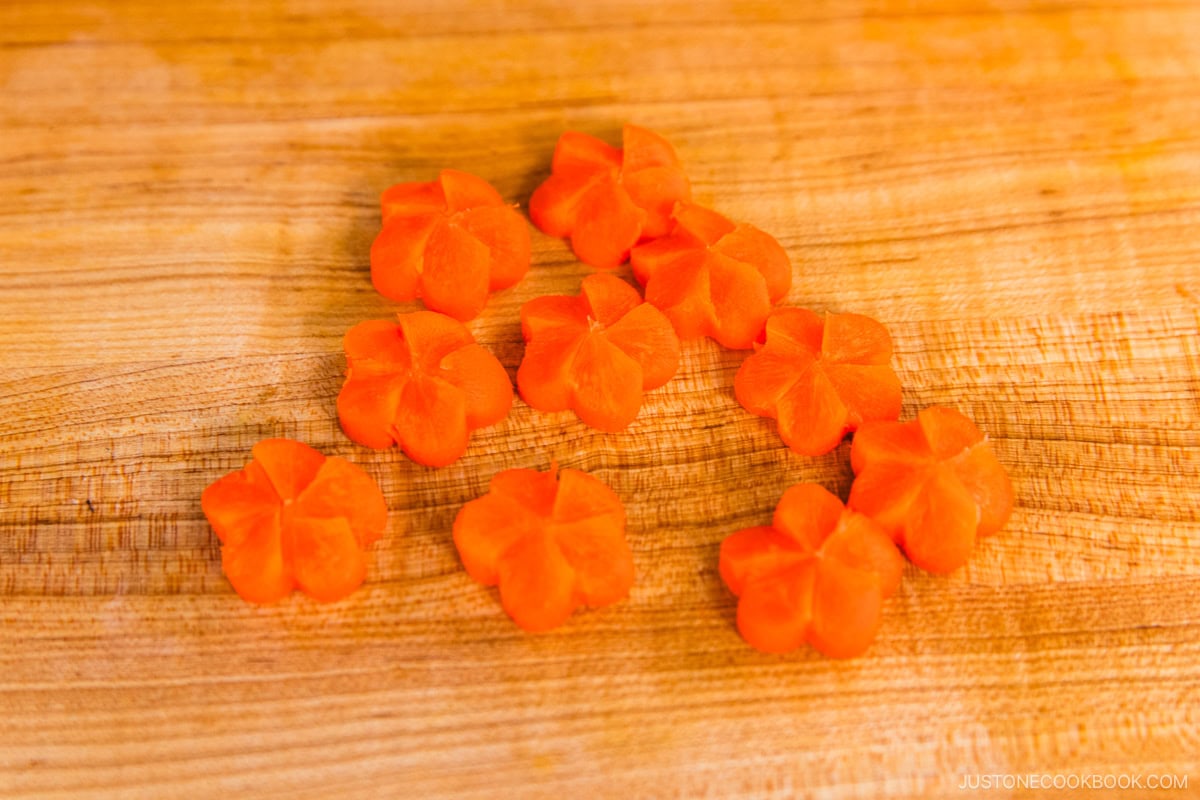Visiting Japan? You’re bound to encounter a few of the country’s thousands of Shinto shrines and Buddhist temples, especially around New Year, when locals flock to these sacred spots for blessings and celebrations. You might even hear someone say, “Japan doesn’t have a religion” or “I don’t believe in gods,” which might sound confusing, especially when you’re surrounded by torii gates, omamori, and shrine rituals.
This article unpacks the mystical world of Shinto kami, Japan’s native gods or spirits. Learn what they are, how many exist, who’s the most important, and what to expect when visiting a shrine.
What Exactly is a Japanese Shinto Kami?
“A supraconscious manifestation of vital living force”
At the heart of Shintoism is the idea of kami—an animistic force present in nature, people, and even objects. Influenced over time by Buddhism, Confucianism, and modern worldviews, kami can be interpreted in many ways.
Rather than a single all-powerful god, a kami represents archetypal energy: the spirit of a mountain, a storm, a fox, or even a remarkable human being. A kami might dwell in a natural place or be honored at a formal shrine, but its essence is often elusive and intuitive, felt rather than fully understood.
How Many Gods Are There in Shintoism?
Eight million—and counting...
Ask a Japanese person, and you might hear the phrase “yaoyorozu-no-kami”, which translates to “eight million gods.” It’s not a literal number. It symbolizes the infinite nature of kami, countless, ever-present, and diverse in form.
Who is the Most Important Shinto God?
Among this vast pantheon, one kami stands above the rest: Amaterasu-Ōmikami, the sun goddess. She’s considered the ancestral deity of Japan’s Imperial Family, who trace their lineage to her grandson Ninigi-no-Mikoto, sent to Earth to rule.
Born from the left eye of the god Izanagi, Amaterasu embodies light, warmth, and life. Her divine status is honored at the Ise Grand Shrine, one of the most sacred places in Japan.
Japan’s name, Nihon, means “origin of the sun,” reflecting Amaterasu’s role as the country’s spiritual cornerstone.
What Types of Shinto Kami Are There?
Shinto kami (deities or spirits) are incredibly diverse, but they can generally be grouped into a few key categories based on their origins and roles in mythology:
- Kotoamatsukami: These are the first gods to emerge at the beginning of the universe, before the world and humanity were created.
- Seven Generative Pairs: After the primordial deities, came seven pairs of male and female kami who were responsible for creating the physical world.
- Hitogami: Some kami were once real people who were later revered as gods due to their exceptional wisdom, leadership, or achievements.
- Adopted Kami: Shinto has also absorbed deities from other belief systems, especially Buddhism and Hinduism, creating blended or adapted forms of worship. One example is Benzaiten, originally the Hindu goddess Saraswati, who became a kami of music, learning, and water in Japan.
10 Popular Shinto Kami and Their Shrines
While most visitors don’t know which kami resides at which shrine, people often visit specific shrines based on life events or goals. Here’s a guide to the most well-known kami and where they’re worshiped:
1. Izanagi

Izanagi-No-Mikoto is a generative kami who stirred the ocean with the Amenonuhoko spear, and in doing so created the first island of Japan, Onogoro-shima. He manifested myriad gods, most notably the Sun god Amaterasu, as well as the Moon and storm gods. His descent into the Yomi, or underworld, in an attempt to retrieve Izanami, explains the separation between life and death in the Shinto faith.
The Izanagi Shrine on Awaji Island is the key shrine dedicated to Izanagi and Izanami, while the Eda Shrine in Miyazaki is said to mark the spot where Izanagi performed the purification ritual after returning from the underworld.
2. Izanami

Izanami is the female consort to Izanagi. Although they created many offspring together, Izanami was tragically burned to death when she gave birthed the fire god Kagutsuchi. Her story ends when she is permanently sealed off in the underworld after angrily pursuing Izanagi for looking upon her horribly burned face. Iya Shrine in Matsue, Shimane, is specifically dedicated to her and claimed to be the spot where she is buried.
3. Amaterasu

In the Kojiki, Amaterasu emerges as the key figure in the Shinto pantheon. As the principal solar deity, she becomes the ruler of the heavenly realm, Takamagahara. The Japanese Imperial Family traces their lineage back to Amaterasu through her great-grandson, Ninigi, who was dispatched from heaven to establish rule over Japan.
The Ise Grand Shrine is the most important Imperial Shinto shrine in Japan. The spirit of Amaterasu is said to have been enshrined there over 2000 years ago. The Amano Iwate Shrine in Takachiho, Miyazaki Prefecture, enshrines the sacred cave where she retreated.
4. Kagutsuchi

Kagutsuchi, the fire god, wasn’t around for long because Izanagi killed him shortly after his fiery birth killed his own mother. From his blood and various parts of his body, various kami were born, such as the kami of the river, mountains, and swords. He is often worshiped by tradespeople and artisans. Kagutsuchi is also known as Homusubi.
The Atago Shrine in Kyoto City is the most well-known shrine that reveres Kagutsuchi as well as the Hibashiri Shrine in Izumisano City, Osaka. Both these shrines are famous for their fire festivals and rituals.
5. Susanoo

Susanoo is the windstorm god who was manifested from Izanagi’s nose. He is also the belligerent brother of Amaterasu, who caused her to flee from him into a cave, thus plunging the world back into darkness. The famous Yasaka Shrine in Kyoto enshrines Susanoo as the principal kami, as does the Yasaka Shrine in Osaka-Namba with its mythical lion-head design.
6. Ninigi

Ninigi is a kami of key importance since he is the great-grandson of Amaterasu, who sent him to rule over the islands of Japan. He descended from heaven upon Mount Takachiho in Kyushu with the three sacred objects, namely a mirror, a jewel, and a sword. The nearby Kirishima Shrine and Kushifuru Shrine celebrate this event.
7. Okuninushi

Okuninushi appears early on in the Kojiki histories. He is sometimes described as a descendant, or perhaps even a son, of Susanoo. His name means the ‘Great Land Master’ and he is a kami of nation building, match making, trade and agriculture, as well as medicine. He is also known as Omononushi.
Legends of Okuninushi abound in the Izumo area of Shimane, where he is worshiped as the principal kami of Izumo Taisha. He is also enshrined in Kasuga Taisha in Nara City and Miwa Shrine in Sakurai City as Omononushi.
8. Hachiman

Hachiman is one of the most important and widely worshiped Shinto gods. During the times of the samurai, he became an important military god. Hachiman is a key protector kami of the Imperial Family and the nation. Through his connection with the emperor Onin, he is also considered a kami of literature and culture.
The head shrine is Usa-jinjya in Oita, Kyushu, and Tsurugaoka Hachimangu Shrine in Kamakura is the most important one in the Kanto region.
9. Inari

Inari-O-Kami is by far the most popular Shinto god worshiped all over Japan. There is no mention of Inari in the Kojiki stories, but there are similar types of kami. Farmers worship Inari San for rice and agricultural production, and town dwellers visit Inari shrines for business success. Many scholars believe that Inari worship is one of the earliest forms of animism in Japan.
Fushimi Inari Taisha in Kyoto is the head Inari shrine of Japan, while Yutoko Inari Shrine in Saga Prefecture, Kyushu, is considered the second most important.
10. Konohanasakuya Him
In the Kojiki stories, Konohanasakuya-hime was the daughter of a mountain kami who married Ninigi in place of her elder sister. She is worshiped for protection against fire and safe childbirth. She is the kami of cherry blossom trees and also of Mount Fuji. Two of her most important shrines are Fujisan Hongu in Shizuoka and Sengen Shrine in Yamanashi Prefecture.
Things to Do When Visiting a Japanese Shrine
When you visit a Japanese Shinto shrine, always remember to first perform a purification at the water trough or temizuya. Next, pay your respects to the kami of the shrine standing in the appropriate place. Of course, be mindful of others and avoid taking photos of people praying or Shinto priests close up. B
efore you leave the precinct, there are a number of typical memorabilia you can take away with you:
- Talismans or omamori are nicely brocaded pouches with prayers or blessings inserted. They are for protection and good fortune.
- You can write your prayers or wished on a colorful ema plaque, but these you usually hang up at the shrine if you write a prayer on them.
- An ofuda is a special kind of wooden stick blessed with the spirit of the kami. You should place it on a home alter or somewhere high up. After one year, you should dispose of it by burning.
- A goshuin-cho is a booklet where you can receive a calligraphy kanji representation of the kami. You can also get these at temples. For a foreign visitor, it's okay to use the same book for shrines and temples.
Shop Shinto-Inspired Souvenirs
Take a piece of Japan’s spiritual culture home with these beautifully crafted items inspired by Shinto kami and traditional motifs. Perfect as gifts or meaningful keepsakes!
- Fujin and Raijin Sensu Fan: Featuring Japan’s legendary storm gods, this folding fan showcases a striking dual design full of energy and tradition.
- Torii Gate and Fox Sensu Fan: This fan captures the mystique of Inari shrines, where foxes are revered as divine messengers.
- Traditional Japanese Incense by Kousaido: Elegant and Kyoto-made, Kousaido incense is inspired by seasonal fragrances and sacred rituals, perfect for creating a calming atmosphere.
- Premium Japanese Green Tea Blend: Each tea bag combines high-grade sencha with a touch of rich matcha. Ideal for daily tea rituals or as a thoughtful gift for tea lovers.
- Handmade Mino Ware Chawan: Enjoy your tea in the traditional way. Its rustic glaze and weighty feel are ideal for whisking and sipping matcha, bringing elegance and calm to your daily routine.
- J Taste snack collection: Featuring curated Japanese treats that highlight regional flavors and textures, from crispy senbei rice crackers to sweet yokan and fluffy cakes.
Make the Sunrise Your Shrine and Temple
Shintoism is neither a religion nor a belief. It is the recognition of and personification of a phenomenal presence in the world. It embraces harmony with nature, respect for others, and celebrates life with a full heart of gratitude. The simplest thing to do is to start each day by making the sunrise your temple and inviting the spirit of the kami into your life.
If you have any thoughts on Shintoism or would like to share your experience of a Japanese shrine, then pop us a comment below.











 English (US) ·
English (US) ·